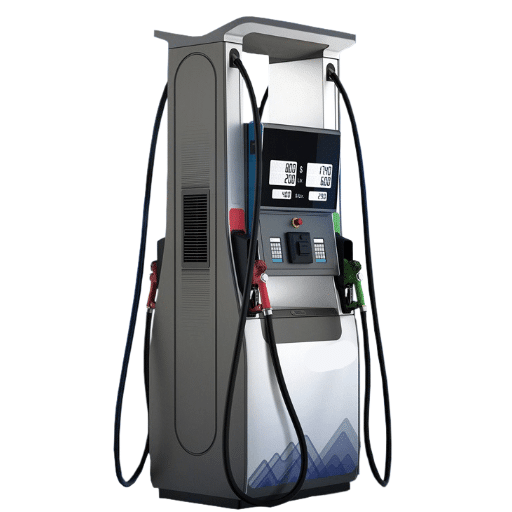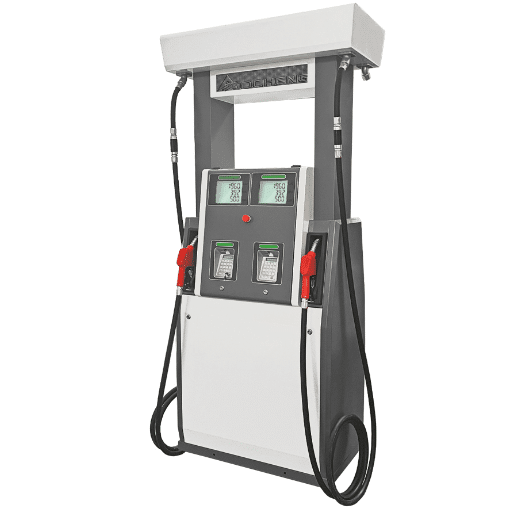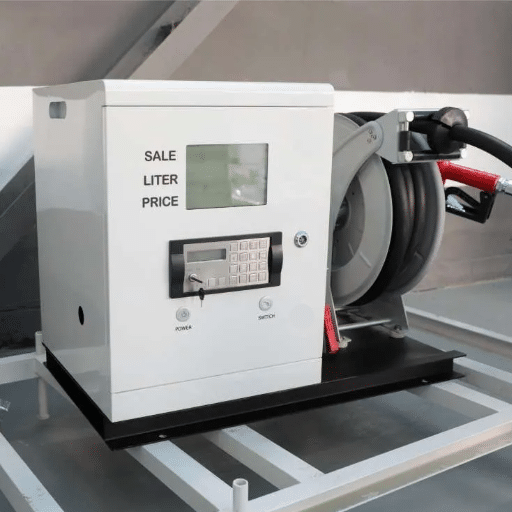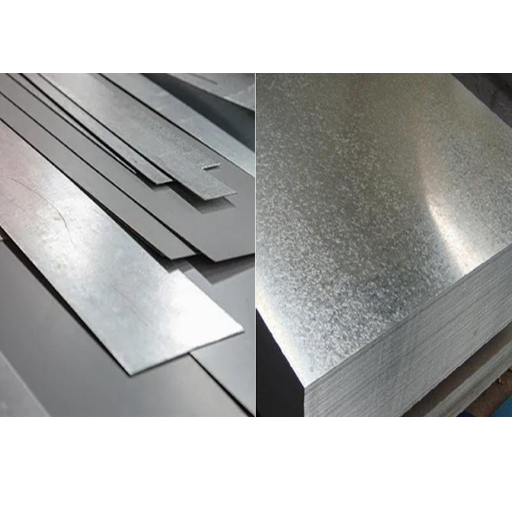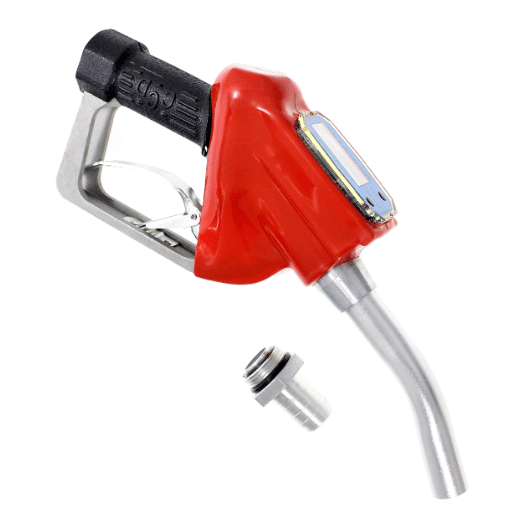Fuel management is central to the operations of a modern fuel station, which is always looking for ways to be more efficient, reliable, and precise. Among the solutions offered, the portable fuel dispenser is the most radical one, as it is capable of not only making the whole process of fuel distribution easier but also providing better access and a wider range of functions. The following paragraphs will highlight the main advantages of portable fuel dispensers, the different scenarios of their use, and the technology that has made them what they are today in order to prove their necessity for fuel stations that want to remain competitive and serve various customer requirements. If you happen to be interested in the latest trends available for your business or in finding out ways to enhance your workflows, you should definitely not miss the opportunity to go through this detailed presentation on how portable fuel dispensers can dramatically change the fueling process, making it more efficient and productive.
Understanding Portable Fuel Dispensers
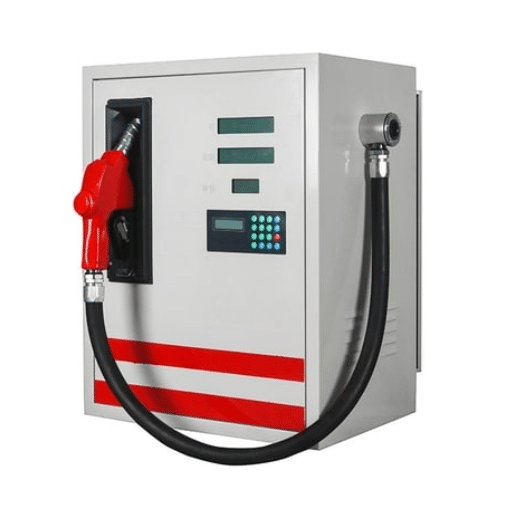
A portable fuel dispenser is a compact, mobile system that can efficiently and precisely store, measure, and dispense fuel. Usually, these devices consist of a tank for storage, a pump, and a flow meter, thus facilitating the transfer of fuel with accuracy without being limited to a fixed fueling station. They find their application extensively in sectors like agriculture, construction, and transport, where fueling on-site is vital. Their being movable adds to the advantages of flexibility, decreased downtime, and support to operations in hard-to-reach or transient places, thus turning them into a very useful instrument in today’s fuel management.
What is a Portable Fuel Dispenser?
A portable fuel dispenser is a small, easily movable unit that is capable of running highly accurate fueling operations, and it is usually made of indispensable parts, including a storage tank, pump, nozzle, and flow meter. These devices allow the fuel to be moved directly to machinery or cars without the need for a fixed fuel station. Portable fuel dispensers are widely used in agriculture, construction, and logistics industries as they provide vital solutions for both on-site and remote fuel needs. Their portability, accuracy in operation, and reduction in equipment downtime make them an indispensable resource in cases where refueling flexibility and reliability are very important.
How Portable Fuel Dispensers Work
A portable fuel dispenser consists of a precise pumping mechanism, flow control systems, and a secure fuel storage solution that work together. Conveyors of this type usually have a motorized pump, a fuel hose, and a dispensing nozzle that are all connected to a tank or storage container. The pump, once activated, transfers fuel from the tank to the dispensing nozzle through the hose, maintaining a controlled pressure all the while. Most of the dispensers come with a flow meter that is integrated to allow monitoring of the amount of fuel transferred accurately.
State-of-the-art portable fuel dispensers often come with cutting-edge technology like automated shut-off nozzles and filtration systems that help in eliminating overflows and also in removing dirt. To add to that, the dispensers have power options that vary from battery packs, vehicle power outlets, or built-in generators, thus making it easy to use them in far-off or even off-grid locations. They are built with safety in mind, which is why they have anti-spillage features, grounding cables for static dissipation, and heavy-duty construction that can last in the most tried environments. This mix of features allows for the use of portable fuel dispensers while providing efficiency and reliability in the case of an on-site fueling operation.
Benefits of Using Portable Fuel Dispensers
Portable fuel dispensers provide unmatched convenience and efficiency in fueling management, especially in off-the-grid areas or during emergency operations. Their mobility enables users to move and dispense fuel right to the machines or cars without needing a stationary fueling infrastructure. This feature is extremely important for sectors like agriculture, construction, and logistics, where equipment and fleets are spread across diverse and sometimes remote areas.
One more benefit is the reduction of downtime and the corresponding improvement of operational efficiency. Portable dispensers allow for on-site refueling, which means that there will be no need for traveling to fuel stations, thus making the process faster and minimizing fuel-related disturbances. Moreover, these dispensers are fitted with precision metering systems, which means that accurate fuel delivery takes place and wastage is reduced; thus, over time, there is cost saving.
The question of safety is a major concern when it comes to portable fuel dispensers. They come with features such as anti-spillage mechanisms, sturdy construction, and compliance with industry safety standards, which reduce the risks connected with fuel handling, for instance, leaks and contamination. In addition, many models are flexible concerning their power options and can work with different kinds of energy sources, thus giving consistent performance no matter the working environment.
In the end, portable fuel dispensers are a reliable remedy for the maintenance of productivity, the guarantee of safety, and the decrease of operational costs in industries that heavily rely on fuel.
Types of Portable Fuel Dispensers
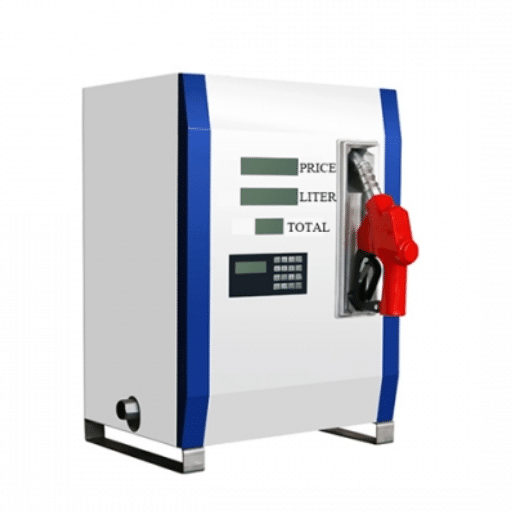
| Type | Power Source | Best For | Key Features |
|---|---|---|---|
| Manual Fuel Dispensers | Hand-operated pumps | Small-scale applications, areas with scarce power | Utilitarian, regulated fuel discharge |
| Electric Fuel Dispensers | Electrical power | Frequent or bulk fuel distribution | High efficiency, fast fuel flow rate |
| Battery Fuel Dispensers | Rechargeable batteries | Areas lacking power infrastructure | Maximum mobility, versatile placement |
| Pneumatic Fuel Dispensers | Air pressure | Heavy-duty operations | Powerful, suitable when power unavailable |
Allowing the tool companies to pick up the most suited applicator for the appropriate operational requirements, these categories do try to deliver maximum efficiency and reliability for a gamut of applications.
Diesel vs. Gasoline Portable Fuel Dispensers
Consideration of a few very crucial factors is a must before comparing diesel and gasoline portable fuel dispensers—compatibility with the fuel types, energy density, level of maintenance, and suitability for the application. Diesel dispensers are normally designed to be able to resist the chemical properties and viscosity levels of this fuel, fairly dense and less energy-efficient compared to gasoline. This is what makes this sort of dispenser more valuable for heavy-duty machines, transportation fleets, and industrial applications—places where preference is given to fuel efficiency while highly valuing performance. Diesel fuel is also much less volatile, enhancing safety during storage and operations for refueling.
Gasoline and diesel portable fuel dispensers are suited for dealing with gasoline and diesel fuel, respectively, as gasoline is lighter and more flammable. Gasoline portable fuel dispensers are commonly used with light passenger vehicles, smaller machinery, and light-duty equipment. Safety issues must be considered because gasoline is more volatile than diesel. Furthermore, engines that use gasoline generally demand more frequent maintenance schedules than diesel fuel engines, which can alter the overall cost efficiency of operations.
Confusingly, the choice between diesel and gasoline portable fuel dispensers is dependent upon operational obligations, environmental factors, and the nature of the equipment to be refueled. Understanding these differences can ensure that the most efficient and reliable fuel dispenser is available for a given application.
Mini Fuel Dispensers for Small Operations
Small fuel dispensers are prepared for operation on a small scale. The cost-effectiveness of these types of small fuel refiners accompanies the benefit that they are able to be quickly removed and replaced at any location. They are also a good help in agronomy, building, and small limo activities. This type of feeder also comes designed with a nice fuel flow meter, digital or analog meters, and adjustable hoses to ensure that delivery is spot on.
Looking at jackpots, it is observed that diesel fuel mini dispensers blow gas station-style dispensers out of consideration for heavier use on grounds of strength and fuel economy at the pump, whereas manual gas units are ideally portable for lighter duty discharge use. The choice between manual and electric models depends on constraints imposed by power availability and the use itself. A transport consideration might be shifting towards a lower-cost manual pump that can be easily powered when the lights go out. Many also feature during the manufacturing process an additional element of safety through appropriate anti-static groundings, and whether they shut down automatically, to diminish any fuel hazards when approached by a refuel-task-minded utility.
Good quality fuel filling can only be realized when one purchases a minifuel dispenser that is well-designed. To help in the duty, all suitable accessories are suggested, specifically aimed at helping in fuel-dispenser selection: ability to view the other equipment being serviced, the immediate operating environments for operations, intended fuel use, and if a petroleum marketing company is not engaged in the conspiracy elements supporting energy-efficient solutions for the business.
Skid-Mounted Portable Fuel Stations
Skid-mounted portable fuel stations are intended to provide compact, self-contained concepts for efficient and safe storage and distribution on the site. They were installed onto steel skids so they could be easily transported and installed at any site. They are broadly utilized within industries like construction, mining, agriculture, and remote sites, for their versatility and toughness.
Key components provided are the fuel cube, dispensing pump, meter, filtration system, and safety mechanism for compliance with health and safety regulations and the environment. This provides a reliable method for the management of fuel distribution when no permanent fueling station infrastructure is available. Further flexibility is integrated as many models can handle various grades of fuel, including diesel, gasoline, and aviation fuel.
The transportable fueling station will take different forms, but the packaging of such an apparatus involves the same fundamentals pump and a storage tank on a skid or a portable tank. These fueling stations can be a diesel tank or any other liquid transportable. A specific challenge that transportation of mining equipment, aircraft, ships, or other non-on-highway equipment requires meeting state and federal highway transportation regulations (costs associated with complying with these regulations are often high, indicating its need for reward). Mobile fueling stations must be verified.
Once an organization with a high mobility requirement that could contrastingly be for a short period of time for a specific location or continued mobility over the duration of its existence selects a design, staff is presented for consideration. Moving enables these mobile fueling station designs to be used—some under one owner, while others are not prohibited by location.
The transportable fueling solution is a safe and fast source for potential generators for up to twenty-four hours before refilling. It is of a ‘move-less’ style too. Concurrently, twelve hours or three times as much is made of a rack-style fueling station set up for modified operation. It is well within the same day or nearly fourteen more hours afterward before requiring refilling.
Choosing the Best Portable Fuel Dispenser
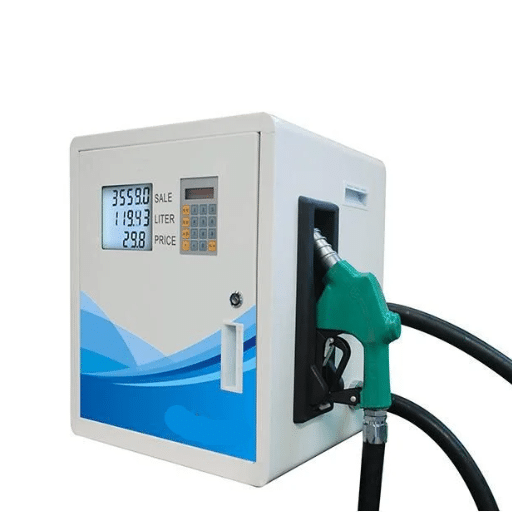
Consider the important factors of capacity, durability, and compatibility with the fuel selection when choosing a portable fuelling dispenser. It should be made from rugged, corrosion-resistant materials to withstand severe environmental conditions. Verify that the fuel dispenser adheres to strict safety and regulatory standards-such as EPA and UL certification, to ensure the overall safety of its operations. Features like accurate flow meters, leak prevention systems, and portability are vital for increased efficiency and reliability. So there should be an accurate understanding of the required dispenser matching your operational needs that suits both safety and meets established quality standard benchmarks.
Factors to Consider When Selecting a Fuel Dispenser
Flow Rate and Dispensing Speed
The flow rate is a critical part of dispensing fuel, which also determines dispensing speed. In standard retail applications, dispensers are typically required to operate within the always achievable flow rate range of the average 5 to 10 gallons per minute, while commercial or industrial-grade dispensers can have rates from 15 to 30 gallons per minute or even more. The choice of a flow rate, high or low, essentially rests on the particular operational demand, the vehicles or machinery they are servicing. High-speed vehicles must be selected for areas in which quick refueling may be needed, such as shipping ports and large construction projects.
Type of Fuel Handled
Fuel dispensers are often designed for certain fuels such as petrol, kerosene, biodiesel, shale gas, or ethanol blends. For example, an ethanol-compatible dispenser should use components resistant to corrosion induced due to alcohol, while a CNG dispenser must facilitate the precise pressure required for safe and efficient refueling. Ensure the dispenser is compatible with the fuel type intended for use in order to avoid operational disruptions and maximize the lifetime of equipment.
Technology Integration and Connectivity
Emerging fuel-dispenser technology trends are smart systems and IoT connectivity. Sophisticated models offer digital displays, real-time monitoring, and cloud connectivity, enabling remote diagnostics and software updates. Advanced payment systems, such as contactless or mobile app-based transactions, help to make the refueling experience more convenient. Implementing such technologies can boost overall operational efficiency, reduce downtime, and create wait-free DL for customers.
Energy Efficiency and Environmental Compliance
Sustainability and green requirements are becoming primary requirements for fuel dispensers designed for sustainability and minimal environmental impact. For example, the vapor recovery equipment keeps fuel vapor emissions in check; energy-efficient components, like LED displays and optimized motors, assist in reducing the operational cost. Compliance with environmental regulations, such as regulations from the Environmental Protection Agency (EPA), ensures following laws and providing greener operations.
Maintenance and Life Span
The durability and maintainability impact on the operational reliability of the retail fuel dispenser. Keep an eye out for designs that facilitate easy access to the components for routine maintenance work and restoration. Employing high-quality materials such as stainless steel for the piping and nozzle will further increase its corrosion resistance and extend the lifespan of the dispenser. Proper maintenance and timely inspections are required to maintain optimized performance and to keep the costly downtime at bay.
If all of these peculiar features are considered together and aligned with performance metrics and compatibility features, business operators are investing in dispensers that not only fulfill the immediate requirement but will also adapt to forthcoming industry demands. Eventually, this choice of fuel dispenser will guarantee a long-term, safe operation forever after.
Top Brands for Portable Fuel Dispensers
Three portable fuel dispensing units are undoubtedly among the largest brand names that have remained reliable, innovative, hence, created top-notch industry standards:
Fill-Rite
Most distinguished for the good quality and high performance of all the products they get from their pumps, Fill-Rite also has portable fuel dispensers that have been customized for precise and efficient fuel transfer. Some of the features of these products include explosion-proof motors as well as filters for extra safety and a more prolonged life. Fill-Rite, as evident from all the dealers’ responses, is popular for its extensive durability in tough working conditions.
GPI (An appropriate epigone)
Founded on trust, GPI mainly produces portable refueling equipment that is extremely precise and easy to use. These spells have very few costs for the user as they are lightweight and of very durable construction, guaranteed by strong and dependable engines, three willing characteristics serving as real icing on the cake. User-friendliness rests at the head of GPI’s products, which require minimal care above all else.
Tera Pump
Emphasizing a cheap price and on-the-go convenience, Tera Pump is a manufacturer of portable, easy-to-handle fuel transfer systems. The company’s electric and manual models are designed with easy deployment in mind, with much utility for small-scale applications. Tera Pump makes good use of such features as automatic shut-off and flexible boosters for enhanced efficiency.
These companies exhibit the best practices in the portable fuel dispenser market by addressing important customer desires such as safety, accuracy, and portability. Whether the choice is the high-end durability of industrial-grade units or the user-oriented convenience, these companies offer reliable answers to various refuelling cases.
Customization Options for Your Fuel Station
The adjustment made to the fuel stations will meet the client’s operational needs in terms of equipment and layout. These can include:
Fuel Dispensing Systems
Various types of dispensing systems target speed, precision, and the category of fuel dispensed. There are multi-product dispensers that offer gasoline, diesel, and biomass fuels simultaneously, increasing flexibility.
Tank Configuration and Storage
Different volumes of storage and different accessibility options, and environmental needs help decide tank configurations and storage needs, whether underground or above ground. Double-walled tanks and leak-detection mechanisms could be incorporated for safety and compliance.
Point of Sale (POS) Systems
Advanced POS systems have to be able to handle transactions upfront quickly, simply, and efficiently-including non-cash transactions such as credit cards, debit cards, smart cards, and data communication for loyalty calculations. Integrated POS transactions help maintain security during the sale, keep lines short, and effectively check the inventory.
Canopy and Lighting Design
Customizing the canopy’s size and lighting levels facilitates aesthetic appeal, as well as guarantees optimal function and visibility at night. Among the more energy-efficient choices are those illuminated with LED lighting, which helps in lowering the cost of operation.
Safety and Environmental Control Features
Equipment, like vapor recovery systems, spill prevention controls, and emergency shutdown mechanisms, could be added as a safety priority or to comply with local environmental regulations.
Branding and Aesthetics
Custom branding, signage, and paint schemes help in strengthening the market presence and image of the station and effectively attract a larger customer base. The very best materials and designs provide long-term psychological impressions.
By understanding operational requirements and engineering the study to include these customizations, the fuel station owner can offer an efficient, safe, and customer-friendly site, capable of working toward its objectives.
Compliance and Safety Standards

To ensure compliance and safety in fuel station operations, adherence to regulations is a must. Such requirements dictate routine inspection and maintenance of equipment, proper storage and handling of hazardous materials, and adherence to relevant fire safety codes. Systematized installation of an approved leak detection system, precautionary measures for spill prevention, and fire suppression equipment are commonly outlined as needed. Employee training is paramount and shall cover safe operation, emergency response, and wearing protective equipment. Routine control management and documentation are needed to evidence conformance with applicable local and international safety standards.
Regulatory Compliance for Fuel Dispensing
In order for every facility to meet fuel dispensing regulatory standards, effective operations along with strict safety habits are to be carried out. The main aspects include the following:
Ecological Protection
This requires that facilities install advanced leak detection systems, which monitor their storage tanks and piping systems. These containment measures should include sumps and spill buckets to ensure that pollutants will remain locked away underneath in the event of an inadvertent release. Both regulatory bodies, like the Environmental Protection Agency (EPA) and their counterparts, would be mandating the regular monitoring and testing of these requirements.
Fire Safety
Most jurisdictions mandate that an appropriate fire suppression system must be installed. Fire-rated components need to be set prior to fires burning any hazardous materials as hazard mitigation when contained in fireproof dispensing areas inside firehouses.
Employee Education and Supervision
Training of the staff is essential to prevent unsafe fuel handling techniques, the use of emergency shutdown systems, and the donning of personal protective equipment. Refresher courses are conducted to keep workers abreast of the operation’s safety and compliance.
Records and Audits
Having valid information about equipment inspections, leak tests, and training of workers is important to convince the local authorities about the company’s compliance. A number of regulating agencies have annual audits as another step of appraisal.
Facilities can thus provide fuel dispensing operations that are safe and compliant by conforming to these and other supplemental procedures, continuously monitoring the regulatory environment.
Safety Measures for Mobile Fuel Dispensing
| Safety Measure | Description | Importance |
|---|---|---|
| Approved Equipment Provision | Equipment complying with OSHA/NFPA standards | Ensures solidity, working capacity, and anti-spillage |
| Management of Static Electricity | Bonding and grounding during fuel dispensing | Reduces ignition hazard from static discharge |
| Containment Methods for Spills | Spill absorbent aids and containment kits | Quick and easy spill management |
| Ventilation and Vapor Control | Well-ventilated areas and vapor recovery systems | Prevents vapor build-up and ensures air quality |
| Fire Safety Preparedness | Class B fire extinguishers and emergency stops | Protection from fires and equipment failures |
| Operator Training and Certification | Training in hazardous materials and emergency procedures | Maintains consistent safety standards |
| Route and Site Evaluation | Assessment of ignition sources, ventilation, and ground conditions | Minimizes accidents and spills during operations |
Executed alongside these detailed safety measures and strict compliance with regulations, mobile fueling maintenance would operate in such a way that safety, environmental protection, and operational prosperity are put at the forefront.
Best Practices for Fuel Storage and Transfer
Encouraging well-trained behavior with respect to safer and efficient fuel handling is important and more crucial when dealing with flammable fuels. They should be compliant with the industry standards while being stored in approved, appropriately labeled containers, such as UL and FM-approved flammable liquid containers. Storage locations should be properly ventilated, well removed from all sources of ignition, and in an environment where temperature conditions allow all containers to remain unheated, causing over-pressurization. It would also be useful to contain runoff from storage tanks or other spill trays to control the possibility of a minor leak or spill.
While transferring fuel, use dedicated devices that are perfectly designed for the job – e.g., anti-static hoses, earthing/grounding provisions to discharge static electricity. Regularly check hoses, pumps, and their connections for any abrasions or other signs of damage. Do not overfill the tanks by being alert to the fuel level and, wherever possible, by making use of a shutoff facility. Personnel should not forget to be trained in how to manage spills and diminish the environmental impact.
To end, there must also be compliance protocols for legal provisions, including geographically related local, state, or federal regulations that mention the likes of EPA or local OSHA guidelines, to avoid any discrepancy in some safety and environmental standards. Frequent examination of the systems for congestion and working status during operational parameters will ensure compliance with all state, federal, and state laws and accept ongoing technological advancement.
Applications of Portable Fuel Dispensers

Portable fuel dispensers are used for various applications due to the ease they offer and efficiency. They are usually used in construction sites for the refueling of heavy road machinery, or in agricultural operations for feeding tractors and other machinery with fuel; they are suitable to be use in rural areas, where conventional fueling facilities are not available. They are also used for fleet management, enabling efficient refueling of a number of vehicles on-site. These units are praised for being transportable, allowing for the rapid repositioning and contingent work amid a variety of habitats.
Mobile Refueling for Construction Sites
Mobile refueling systems are very advantageous for construction operations by providing immediacy, minimizing fuel-related interruptions, and creating a perfect environment for fueling. Furthermore, in the absence of refueling, machinery may only take a short time to return to the job site. But with a mobile refueling system, this refueling happens on-site, maximizing fuel efficiency and reducing fuel line uncertainty. This on-site refueling is a critical component of mitigating the disruptions to the time of construction process due to refueling.
In addition, the sources of refueling systems support a variety of safety features to mitigate the possibility of spills and ensure that they comply with environmental codes. Also, advanced tracking systems in modern mobile refueling units monitor the real-time fuel consumption, which enhances the efficiency of record-keeping, thus enabling all construction businesses to optimize fuel usage and save costs. The convenience and mobility of mobile refueling mean that it is a paramount method for fuel logistics in enormous, dynamic constructions where time is vital.
Portable Fuel Dispensers in Agriculture
The advent of portable fuel dispensers is critical to the positive progress and stability of agriculture since they ensure maximum dispensing of fuel towards a wide variety of farm machinery, including farm tractors, harvesters, and irrigation pumps. From my side, the dispensers in an overrun-farm manner help reduce time by moving fuel straight to the vehicles, thus virtually eradicating the need for personnel for the periodical re-fueling visits to the stations. Moreover, contemporary models can sustain durable and accurate service, vital to handling an entirely diversified and rugged field plantation operations.
Using Portable Dispensers for Emergency Fuel Supply
In case of emergencies like natural disasters or equipment failure, portable diesel bunk units are the support services that provide an immediate backup system. The essential working tools and machinery equipped with motor-driven types (generators, rescue vehicles, farm machinery, etc.) can continue working when the traditional refueling facilities are out of action. The fuel dispensers benefit from their compactness and mobile design, which in turn facilitates immediate deployment to off-road or unreachable sites, thus saving downtime and operational continuity.
Apart from the well-accepted industry standards, based on their robust materials, the dispensers provide a secure performance even when under a wide range of environmental conditions and work environments.
Conclusion: The Future of Portable Fuel Dispensing
Portable fuel dispensers represent a transformative solution in modern fuel management, offering unparalleled flexibility, efficiency, and reliability across diverse industries. From construction sites and agricultural operations to emergency response scenarios, these mobile systems have proven their worth by reducing downtime, improving operational efficiency, and ensuring fuel availability in even the most challenging environments.
As technology continues to advance, portable fuel dispensers are becoming increasingly sophisticated, incorporating smart features, IoT connectivity, and enhanced safety mechanisms. The integration of precise flow meters, automated shut-off systems, and real-time monitoring capabilities ensures that businesses can optimize fuel usage while maintaining the highest safety standards.
Whether you’re managing a large construction fleet, operating agricultural machinery in remote locations, or requiring emergency fuel supply capabilities, selecting the right portable fuel dispenser is crucial. By considering factors such as flow rate, fuel compatibility, power options, and safety features, operators can invest in solutions that not only meet current needs but also adapt to future industry demands.
The commitment to compliance with regulatory standards, implementation of best practices for fuel storage and transfer, and investment in quality equipment from reputable brands like Fill-Rite, GPI, and Tera Pump will ensure long-term operational success. As the demand for mobile, efficient, and safe fueling solutions continues to grow, portable fuel dispensers will remain an indispensable tool for businesses seeking to maintain competitive advantages and deliver superior service in an ever-evolving marketplace.
Note: This comprehensive guide provides essential information about portable fuel dispensers for educational and informational purposes. Always consult with qualified professionals and ensure compliance with local regulations when implementing fuel management solutions.
Reference Sources
Frequently Asked Questions (FAQs)
What are the key differences between a portable fuel dispenser and a traditional fuel station?
Portable fuel dispensers serve as a great alternative to traditional fuel stations. Ease of use is the most obvious advantage associated with these dispensers. Portable pumps can come in very handy in situations that do not require a permanent stand; some are found in places where major downtime in applications of vehicles and machinery is incurred. Unlike regular fuel stations, which are normally fixed in position, mobile dispensers can do the job exactly where it is needed the most, which is mostly areas related to construction, agriculture, and others.
What are the types of fuel that can be dispensed in a portable fuel dispenser?
Portable fuel dispensers are useful in that they allow for the smooth transfer of various kinds of fuel, such as gasoline, diesel, and kerosene. They are suitable for use in trucking operations, machine fueling, as well as the transfer of fuel to agricultural requirements. Most dispensers available can be tailored to meet any requirements specific to fuel transfer.
Are Portable Fuel Dispensers Compliant with Regulations?
Yes, notable portable fuel dispensers like those from Blue Sky Mobile Fuel will have safety and environmental regulations at heart in terms of considerations. The level of compliance helps ensure that they can be utilized safely in different settings, such as industrial complexes and agricultural operations, without posing a danger to the environment or those who might be in contact with them.
How can a mobile fuel dispenser be beneficial?
Portable fuel dispensers may last longer, depending on how they are used and how properly they are maintained. A well-constructed, high-quality fuel dispenser, made of very strong material such as steel, could have a life of well over ten years, given proper maintenance. Constant checks and proper maintenance are a must to make sure that it works efficiently and is safe for use.
Can mobile fuel dispensers be employed for above-ground fuel storage?
Certainly, portable fuel dispensers can be installed with above-ground fuel storage tanks for convenient refueling, inclusive of safe fuel storage. In different industries, these are used to dispense fuel for vehicles and equipment.
How can I make a portable fuel dispenser reliable and efficient?
Regular servicing and upkeep should be done to guarantee your portable fuel dispenser is never hampered in function and efficiency. This involves the replacement of hoses, fuel pumps, and nozzles for wear and tear. This should help in preventing foreign materials in the form of contamination or blocking out.
Is there any given typical feature I will look for when comparing available portable fuel dispensers?
There are certain characteristics you simply must look for when you are looking to make a purchase. The facility not only customizes, yet has a complete solution that user user-friendly and portable. Other important options might be a built-in fuel transfer pump, a thorough nozzle reel, or compliance with safety regulations — all would unquestionably make it more functional and adapted for your specific needs.
- Transforming the Smart Gas Station: Technology and Solutions for Modern Fueling
- How Much Does a Gas Station Make? Understanding Gas Station Revenue and Owner Income
- How Are Gas Stations Built: A Step-by-Step Guide to Opening a Gas Station
- Fuel Dispenser Pump: Understanding the Essentials of Fuel Dispensers and Pumps

